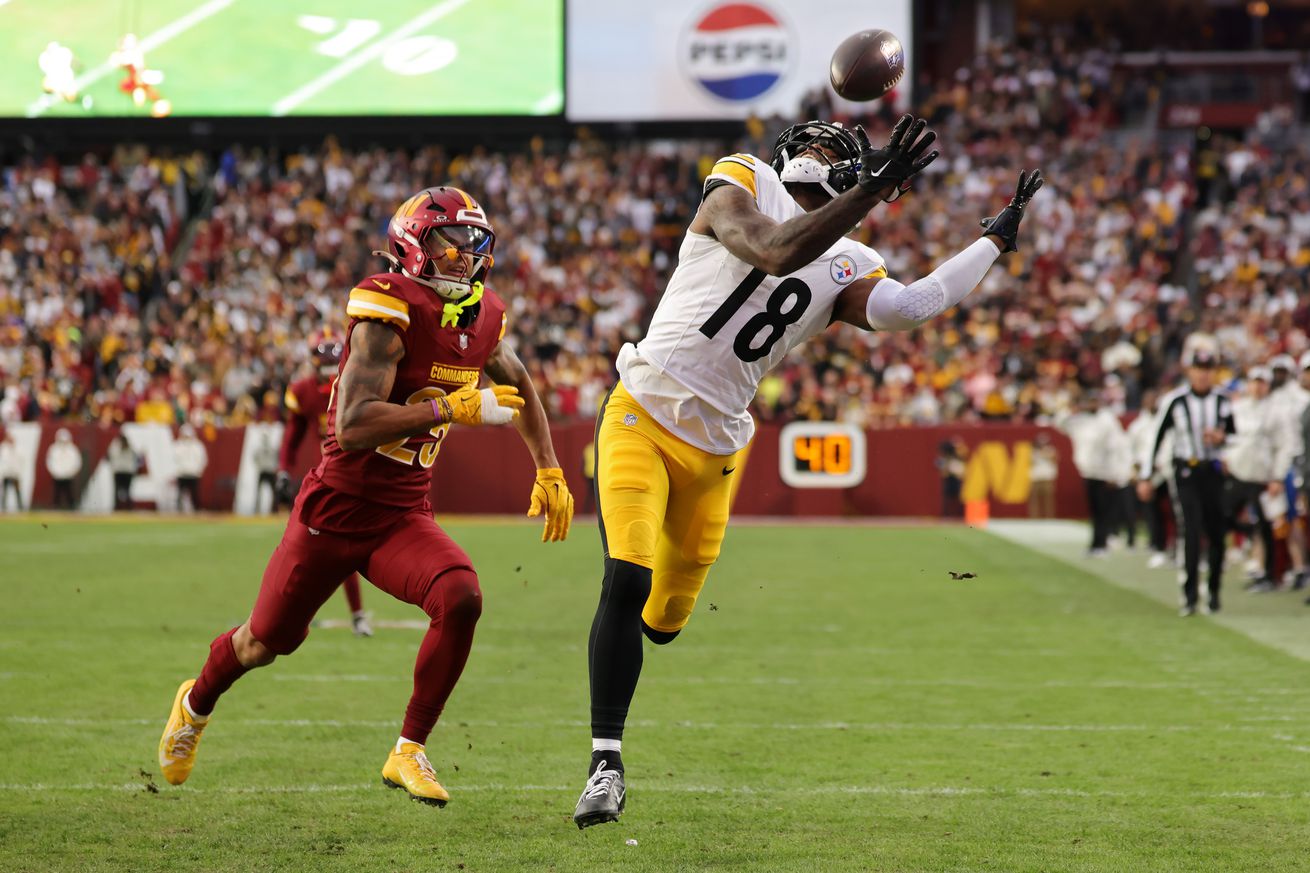
A look at how recent wide receiver trades have faired
Newly acquired WR Mike Williams grabbed the attention of Steeler fans when he caught the game-winning touchdown pass in his first game with the Black and Gold. More amazing than being an instant hero is that he did it while only playing nine snaps in the entire game. There is a well-known Tomlinism that applies to the low snap count for any newcomer: It’s hard to jump on a moving train. Let’s look at how hard that jump is at the wide receiver position in particular.
Welcome to Pittsburgh, Mike Williams. pic.twitter.com/Uz2lntk2gK
— Adam Schefter (@AdamSchefter) November 10, 2024
Williams is one of six starting wide receivers in the past three years to be traded to a new team in the middle of a season. While there is a small sample size of post-trade games, four of the other five experienced a significant decrease in production post-trade. Here is a listing of those players and the percentage of decrease in catches and yards per game with their new team compared to their previous team.
Recent history of wide receivers traded mid-season
In 2022 Chase Claypool played eight games with the Steelers before seven games with the Bears where he would have 50% fewer catches per game and 51% fewer yards per game. It’s hard to remember that Claypool was once a functioning part of an offense now that his irrelevance has made him the butt of jokes amongst Steeler fans, but he was on pace for a season of 68 catches and 660 yards before being traded.
2023 would only see fringe wide receivers traded during the season: Donovan Peoples-Jones, Van Jefferson, and the now-irrelevant Chase Claypool.
This year saw a slew of wide receivers change teams on the fly:
- Diontae Johnson, in a two-game sample, has seen his catches decrease by 88% and yards by 94% per game.
- Davante Adams, in a four-game sample, has seen decreases of 17% in catches and 26% in yards despite getting a big upgrade at quarterback.
- Amari Cooper has also received a huge quarterback upgrade, but his two-game sample shows decreases of 37% in catches and 17% in yards.
- DeAndre Hopkins is the outlier of the group. He has seen increases of 86% in catches and 97% in yards in his three-game sample.
2022 also saw the trade deadline move of Calvin Ridley from Atlanta to Jacksonville. Ridley was suspended, and as such didn’t have to “jump on a moving train” because he wouldn’t play for the Jaguars until he had been through a full off-season. Perhaps a full off-season is the key. We have a decent sample of guys who recently missed their team’s off-season. We will take a look at production levels compared to their previous season on a per-game basis.
Recent history of wide receivers missing training camp
- Jahan Dotson was traded to the Eagles from the Commanders right before the third preseason game, in which he would not play. Despite going from Sam Howell to Jalen Hurts at quarterback, his per-game production is down 69% in catches and 64% in yards over a nine-game sample. While he has AJ Brown and DeVonta Smith ahead of him, due to injuries he has been a starter at the position for several games and still isn’t producing.
- CeeDee Lamb missed Cowboys training camp and preseason in a contract holdout. The All-Pro has seen a 17 % decline in catches per game and a 26% decline in yards per game over a nine-game sample.
- All-Pro Brandon Aiyuk held out and missed the off-season also. Before his season-ending injury, his per-game catches decreased by 13% while his yards dropped by 27%.
- Pro Bowler Ja’Maar Chase is the outlier of this group even though he held out and missed the off-season also. Thanks in part to an eye-popping 11-catch, 264-yard game against the Ravens last week, he is seeing per-game increases of 12% in catches and 37% in yards.
Projection for Mike Williams as a Steeler
Common sense tells us it takes many practice reps for a quarterback and a wide receiver to develop chemistry and timing. The numbers above seem to back that up. It will be hard for Mike Williams and Russell Wilson to get that timing down in the middle of the season as practice time is limited.
Tossing away DeAndre Hopkins as the outlier of the in-season trade group, the best numbers from the rest are a 17% decrease in catches and a 17% decrease in yards. That would put Williams on a pace for 11 catches and 122 yards as a Steeler for the regular season. That doesn’t seem to be worthy of the cost of a fifth-round pick.
We’ve already seen the value Williams brought in his limited snaps. As he learns the playbook those snaps should increase dramatically (by his second game in Kansas City, Hopkins was playing over 40 snaps per game). Against the Commanders, Calvin Austin and Van Jefferson were each targeted twice on sideline go routes like the one Williams converted into the game-winner. The result of those targets was four incompletions. Those four throws need to go to Williams (or George Pickens) in the future. Getting Williams on the field enough that it doesn’t telegraph the go route to the defense is the key to unlocking Williams. If he is quick to learn the playbook and can be the target on those extra deep shots, the sky is the limit for him in Pittsburgh in the regular season and beyond.